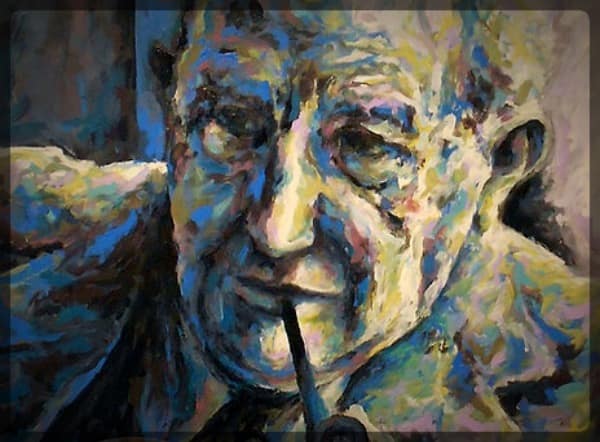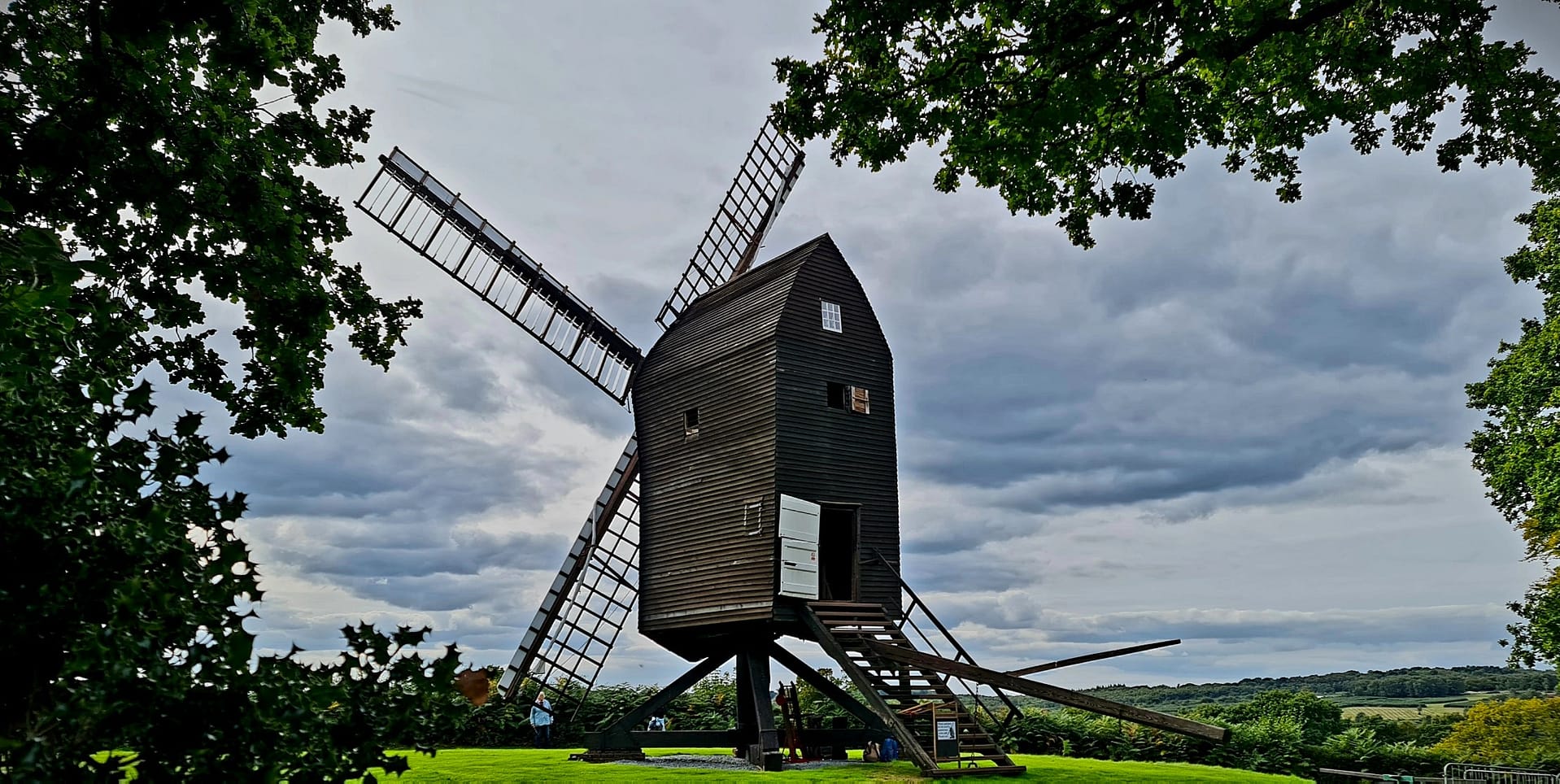Facing Ecotastrophe
United Nations Climate Change conferences take place every year. They are the world’s only multilateral decision-making forum on climate change. Prior to the opening of COP 28 in Dubai, the head of the International Monetary Fund, Kristalina Georgiva, called for an end to an attitude of “business as usual” if the world wanted to manage global warming. The evidence for climate change seems unequivocal. We can live in denial, we can be evermore selfish. But anyone who has a sense of worth for the world and the welfare of all, cannot practise ‘business as usual’. We’re now feeling some of the effects of climate change in the UK, but it is hitting the world’s poorest people the hardest. You might say we are facing an ‘ecotastrophe’.
Virtue Ethics
The current situation on climate change raises the question of how we make decisions. A code I keep being drawn to is called virtue ethics. Virtue ethics began with Socrates, and was subsequently developed further by Plato, Aristotle, and the Stoics. Virtue ethics refers to a collection of philosophies that place an emphasis on being rather than doing, and has several implications when applied to climate change.
For example, in terms of consumption of the earth’s resources, self-control is crucial. Currently there is a book sitting on my shelf called Stuffocation by James Wallman, originally published in 2013. I think the title speaks for itself! Consumerism is not the pinnacle of human flourishing. We can’t solve climate change by ourselves, but we can make small changes each day.
Pope Francis wrote that “When we hurt the earth, we hurt the poor”, so if we are following the fundamental humanitarian principle of helping those less fortunate than ourselves, looking after the earth is of paramount importance in doing this. Whereas it might be tempting to give up in the face of overwhelming issues, this is not a Christian response. If, after creation, “God saw everything that he had made, and indeed, it was very good” – then let’s be good. In the pursuit of virtue ethics I believe, we are not only building a better character, but the character of Christ.
Whatever our creed, faith-filled people are called to be righteous – to have right relationships with others, right relationships with creation, and a right relationship with God. Consumer oriented lifestyles can easily ignore the impact of climate change in other parts of the world. But as God’s people we live in the now and the not yet – in a place where God’s kingdom is here in part, but not in full. Even as the world is crying out, God is at work and we’re invited to join our Creator in a ministry of reconciliation. Reconciling people to God, but also to the creation we’ve been given to steward, and seeing it restored in parallel with restoring one another.
J R R Tolkien
One Christian writer I am drawn back to as I think about these things is JRR Tolkien – which may seem surprising. However, Tolkien’s works: The Hobbit published in 1937, The Lord of the Rings in 1954 and 1955, and The Silmarillion published posthumously in 1977, are epic stories that reflect much of Tolkien’s Christian faith. Surviving the experiences of trench warfare and the Battle of the Somme in World War One, Tolkien became elected to the Chair of Anglo Saxon at Oxford University. It was during the 1920’s and 1930’s that Tolkien’s friendship with a fellow Don, CS Lewis of The Lion, the Witch and the Wardrobe fame, began. Between them they formed a group called ‘The Inklings’, which took a serious interest in the study of mythology especially Nordic myths, storytelling, ancient languages, folklore, and religion.
One result was Tolkien’s development of the philosophy of myth that underpins his work. For most modern critics a myth is merely another word for a falsehood. For Tolkien, myth had virtually the opposite meaning. It was the only way that certain transcendent truths could be expressed. The truth that myths are designed to express concerns not only in the world around us, but the world within us. Lewis recalled one late night conversation with ‘The Inklings’, which went like this:
“‘Myths are not lies’, Tolkien said. There was a rush of wind which came so suddenly on the still, warm evening and sent so many leaves pattering down that we thought it was raining. We held our breath. Tolkien resumed, ‘Myths, are the best way of conveying truths which would otherwise be inexpressible. We have come from God and inevitably the myths woven by us, though they contain error, reflect a splintered fragment of the true light, the eternal truth that is with God. Myths may be misguided, but they steer however shakily towards the true harbour, whereas materialistic ‘progress’ leads only to the abyss and to the power of evil. The story of Christ is simply a true myth, a myth that works in the same way as the others, but a myth that really happened.’”


Tolkien was concerned about the origin and nature of evil. Like many of his generation, two world wars had left a deep impression upon him. Tolkien once said that when imagining the idea of the Ring of Power he had in the back of his mind the part of the Lord’s Prayer that says: “Lead us not into temptation, but deliver us from evil.” Through the symbol of the Ring, Tolkien not so much answers, as raises a classic question about the nature of evil. Significantly, the stereotypical heroic figures, warriors, wizards, etc, often give in or are tempted by the seductive power of the Ring. It is the ‘fellowship’ of the Hobbits for one another which protects these three feet high characters through many dark, vast, and dangerous landscapes. Tolkien appears to stress through the experience of these miniscule characters that such fellowship and self-sacrifice is the one thing that evil cannot comprehend, or overcome.
Eucatastrophe
The ‘eucatastrophe’, (a word Tolkien invented, combining the words ‘eucharist’ from the Greek word meaning ‘good’ or ‘thanksgiving’, and ‘catastrophe’ meaning a sudden turn), the sudden unexpected turn for the good will happen. We may not see it for ourselves but this is our hope, this is the motivation that can take us beyond our own limited resources. For Tolkien the ultimate human example of eucatastrophe was the life, death, and resurrection of Jesus: “There is no tale ever told that men would rather find was true,” he wrote. Colin Duriez, has written this insight on Tolkien:
“Apocalyptic writing like the Book of Revelation in the Bible, provides hope and consolation in hard times. Tolkien, like his fellow Inklings such as CS Lewis, saw the modern world as in crisis. The purpose of apocalypse is to reveal the hand of God in history. It can also be cosmological, revealing mysteries of the cosmos. Both these elements are true of Tolkien’s writings. Biblical apocalypse is concerned with the problem of evil and suffering. Tolkien, too in his writings, is intensely aware of evil. Tolkien’s apocalyptic element may be one of the reasons for his popularity, and why he seems so contemporary. There is strong evidence that western culture is now in deep crisis, and Tolkien has rediscovered or refreshed symbols that point to hope in this present darkness.”
Saruman
Like many of his generation, Tolkien witnessed rapid technological change. In The Lord of the Rings, it is the wizard Saruman, the archrival of the ‘good’ wizard, Gandalf, who personifies Tolkien’s fears of technological development and industrialism. It is Saruman who deforests the beautiful lands of Isengard and turns the area into an industrial landscape for the purpose of creating weapons of war. In the pursuit of control, Saruman is prepared to co‑operate with forces he knows are evil, but which he thinks he can control for his own purposes. This self-deception has been all too familiar during the 20th century. Sometimes these things start as intellectual curiosity, develop as engineering skill, turn into greed and the desire to dominate, corrupting into hatred and contempt.
For example, Saruman’s Orcs start felling trees for his furnaces in order to make weapons, but they end up felling them for fun, as the character of Treebeard complains. Similarly, one might say, the Sarumans’ of the real world rule by deluding their followers with images of a technological paradise, or a modernist utopia; but what often results are the blasted landscapes of the world, stripmined, polluted, and even radioactive. One may disagree with Tolkien`s nostalgic ideals, but there can be no doubt that he has touched upon a serious and lasting issue long before our present environmental concerns.


Travelling Virtuously
The tiny Hobbits, Frodo and Sam, set off together with the Ring in a vast landscape where the road constantly, “wound away before them like a piece of string.” This image speaks of the unpredictable nature of the journey. There will be change and there will be challenge. We will stumble and we may get lost. But if we remain faithful, virtue will prevail. The eucatastrophe is not our creation, but it is instead our hope and our Way. Jesus never promised a clearly signposted path to his disciples, he simply invited them to follow him.
It is an invitation that can come at any time as Tolkien himself knew. For Bilbo Baggins, Tolkien’s favourite character from The Hobbit and The Lord of the Rings, it came on his 111st birthday. Perhaps reminding us that it is ‘never too late to change’. It seems only right to let this much loved character have the final word. In The Lord of the Rings, as he walks along the road before him, Bilbo sings:
“The Road goes ever on and on. Down from the door where it began. Now far ahead the Road has gone, and I must follow, if I can. Pursuing it with eager feet, until it joins some larger way. Where many paths and errands meet. And whither then? I cannot say.”
The road still goes on. Ours now to travel. Virtuously.


